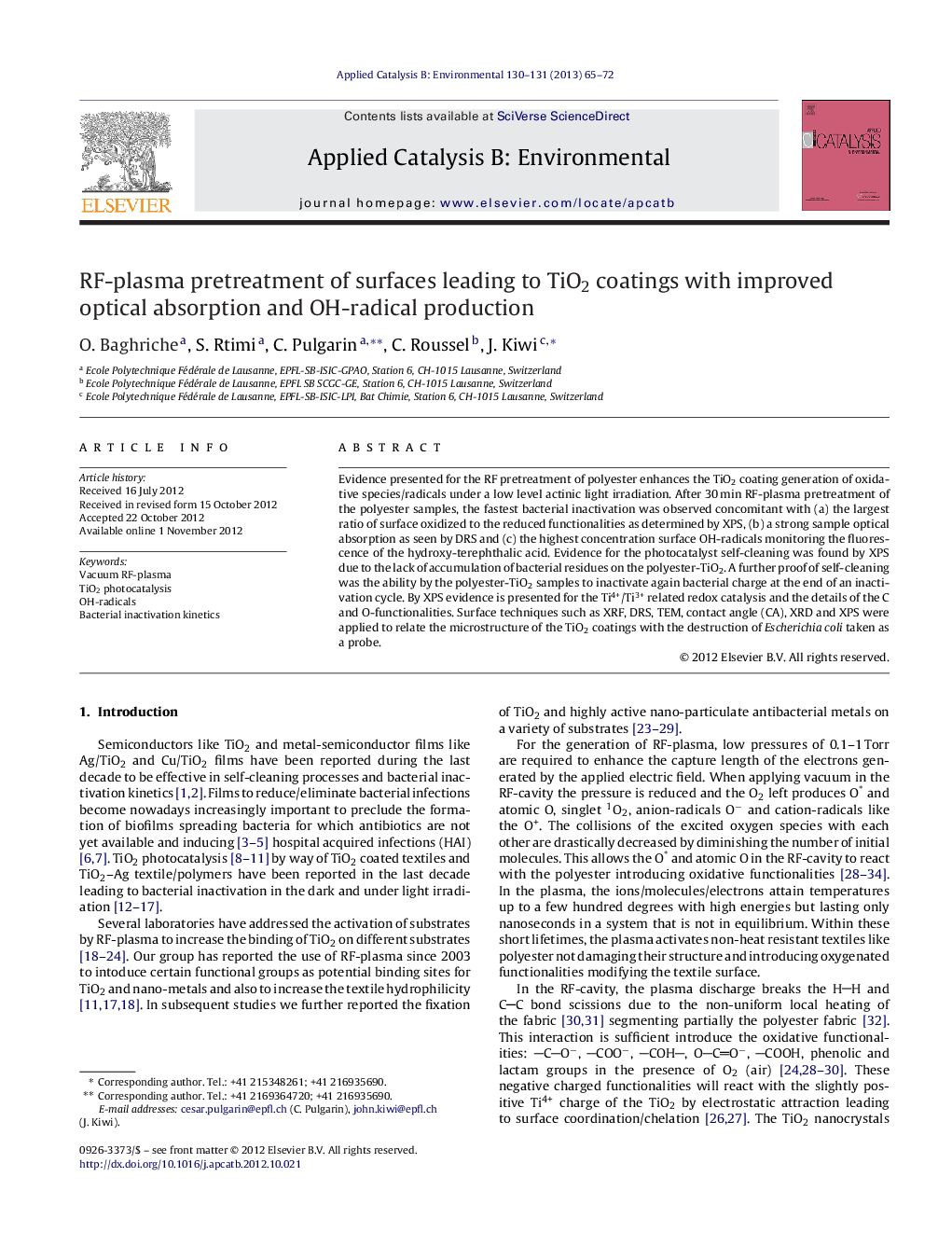| Article ID | Journal | Published Year | Pages | File Type |
|---|---|---|---|---|
| 45816 | Applied Catalysis B: Environmental | 2013 | 8 Pages |
Evidence presented for the RF pretreatment of polyester enhances the TiO2 coating generation of oxidative species/radicals under a low level actinic light irradiation. After 30 min RF-plasma pretreatment of the polyester samples, the fastest bacterial inactivation was observed concomitant with (a) the largest ratio of surface oxidized to the reduced functionalities as determined by XPS, (b) a strong sample optical absorption as seen by DRS and (c) the highest concentration surface OH-radicals monitoring the fluorescence of the hydroxy-terephthalic acid. Evidence for the photocatalyst self-cleaning was found by XPS due to the lack of accumulation of bacterial residues on the polyester-TiO2. A further proof of self-cleaning was the ability by the polyester-TiO2 samples to inactivate again bacterial charge at the end of an inactivation cycle. By XPS evidence is presented for the Ti4+/Ti3+ related redox catalysis and the details of the C and O-functionalities. Surface techniques such as XRF, DRS, TEM, contact angle (CA), XRD and XPS were applied to relate the microstructure of the TiO2 coatings with the destruction of Escherichia coli taken as a probe.
Graphical abstractFigure optionsDownload full-size imageDownload as PowerPoint slideHighlights► Evidence is presented for RF-plasma pretreatment increasing the surface amount of TiO2. ► The increased amount of surface TiO2 led to an increase of OH-radicals under light irradiation. ► Redox catalysis on the TiO2 coatings was involved during light induced bacterial inactivation.
